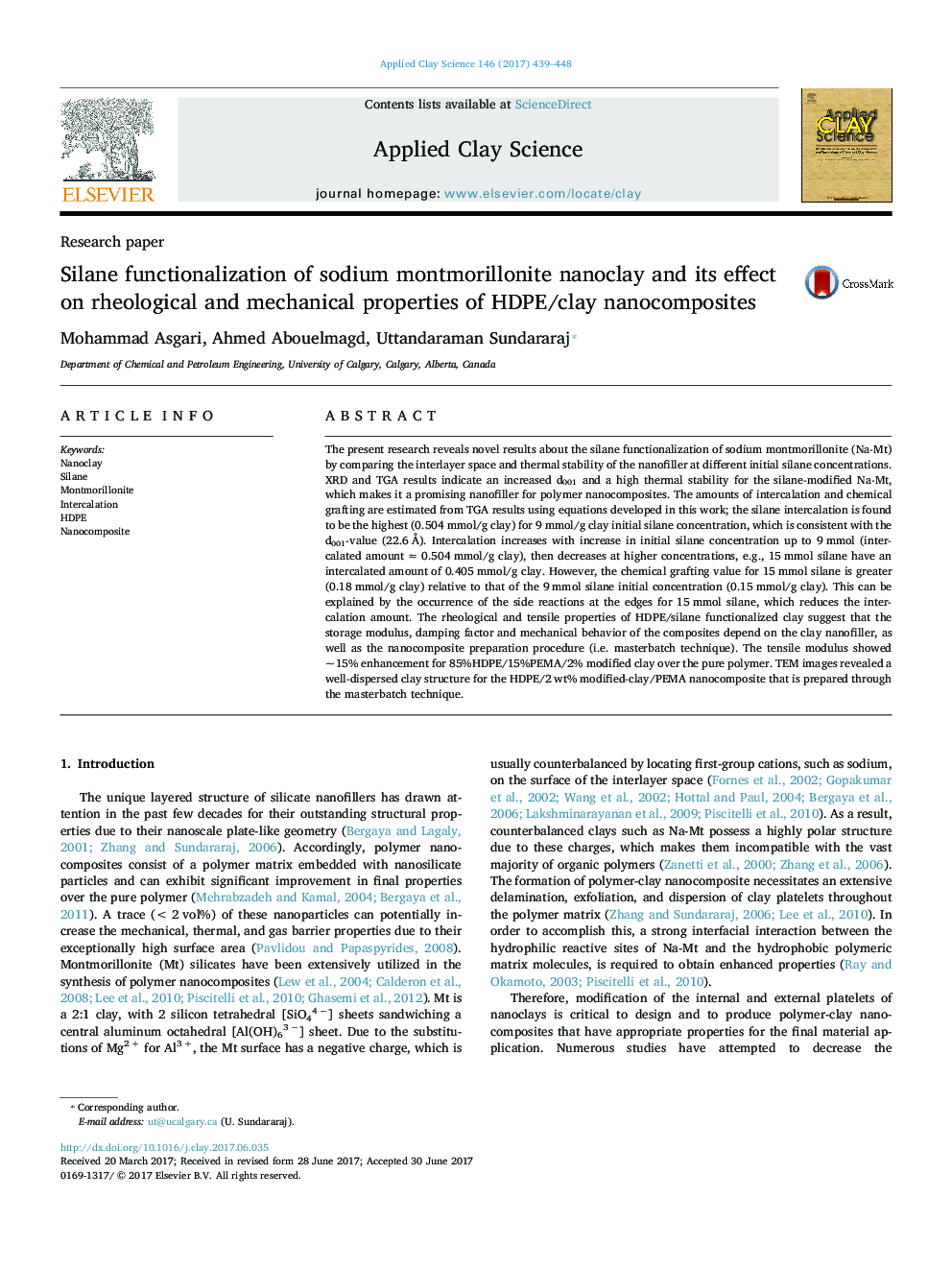| کد مقاله | کد نشریه | سال انتشار | مقاله انگلیسی | نسخه تمام متن |
|---|---|---|---|---|
| 5468873 | 1519042 | 2017 | 10 صفحه PDF | دانلود رایگان |
عنوان انگلیسی مقاله ISI
Silane functionalization of sodium montmorillonite nanoclay and its effect on rheological and mechanical properties of HDPE/clay nanocomposites
دانلود مقاله + سفارش ترجمه
دانلود مقاله ISI انگلیسی
رایگان برای ایرانیان
کلمات کلیدی
موضوعات مرتبط
مهندسی و علوم پایه
علوم زمین و سیارات
ژئوشیمی و پترولوژی
پیش نمایش صفحه اول مقاله

چکیده انگلیسی
The present research reveals novel results about the silane functionalization of sodium montmorillonite (Na-Mt) by comparing the interlayer space and thermal stability of the nanofiller at different initial silane concentrations. XRD and TGA results indicate an increased d001 and a high thermal stability for the silane-modified Na-Mt, which makes it a promising nanofiller for polymer nanocomposites. The amounts of intercalation and chemical grafting are estimated from TGA results using equations developed in this work; the silane intercalation is found to be the highest (0.504Â mmol/g clay) for 9Â mmol/g clay initial silane concentration, which is consistent with the d001-value (22.6Â Ã
). Intercalation increases with increase in initial silane concentration up to 9 mmol (intercalated amount â 0.504 mmol/g clay), then decreases at higher concentrations, e.g., 15 mmol silane have an intercalated amount of 0.405 mmol/g clay. However, the chemical grafting value for 15 mmol silane is greater (0.18 mmol/g clay) relative to that of the 9 mmol silane initial concentration (0.15 mmol/g clay). This can be explained by the occurrence of the side reactions at the edges for 15 mmol silane, which reduces the intercalation amount. The rheological and tensile properties of HDPE/silane functionalized clay suggest that the storage modulus, damping factor and mechanical behavior of the composites depend on the clay nanofiller, as well as the nanocomposite preparation procedure (i.e. masterbatch technique). The tensile modulus showed ~ 15% enhancement for 85%HDPE/15%PEMA/2% modified clay over the pure polymer. TEM images revealed a well-dispersed clay structure for the HDPE/2 wt% modified-clay/PEMA nanocomposite that is prepared through the masterbatch technique.
ناشر
Database: Elsevier - ScienceDirect (ساینس دایرکت)
Journal: Applied Clay Science - Volume 146, 15 September 2017, Pages 439-448
Journal: Applied Clay Science - Volume 146, 15 September 2017, Pages 439-448
نویسندگان
Mohammad Asgari, Ahmed Abouelmagd, Uttandaraman Sundararaj,